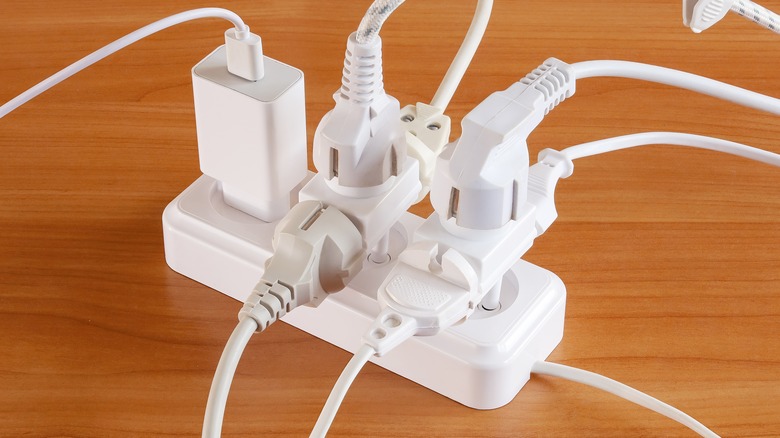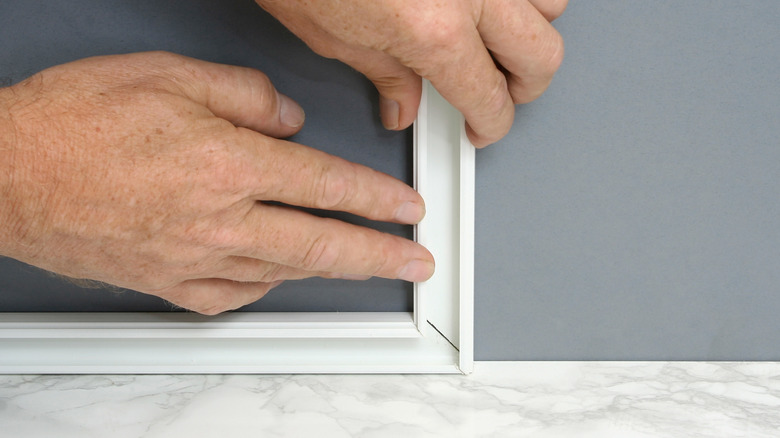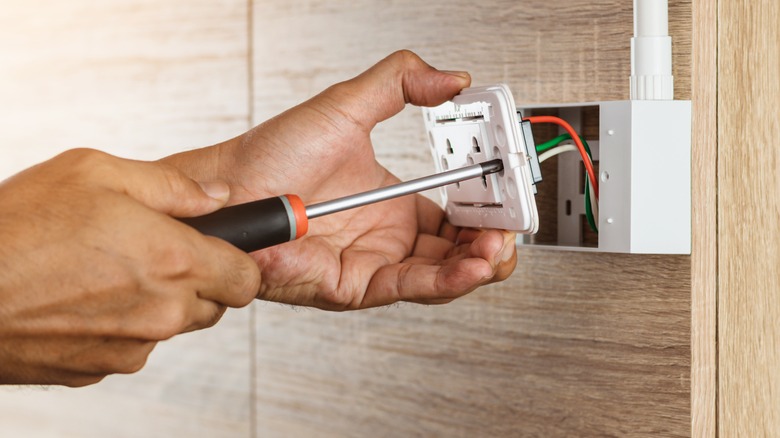What Is Surface-Mounted Wiring?
When it comes to the average home, it isn't always easy to have enough electrical outlets to go around, especially as the number of devices with charging stations increases. Adding more outlets by cutting into the wall and running new lines is the route to take for most situations, according to Wira Electrical. However, this typically requires at least a small amount of damage to the drywall, and that's not always possible or allowable.
Often, older apartments or rented homes to have stipulations, such as not allowing holes to be cut into the wall. There are other situations where you simply cannot create significant change to the structure, like with historic properties that may require an approval process before updating. You still need new electrical outlets in the home, though, and that's when surface-mounted wiring may help. Though not always the best solution for projects, when it comes to gaining more outlets without incurring wall damage, this could be a workable option for you.
How surface-mounted wiring works
Whether you need additional temporary outlets for small appliances in your kitchen or you'd like to add a new light fixture in a hallway, the use of surface-mounted wiring is a straightforward option. Unlike the traditional method of cutting into the drywall, this process allows for the creation of an electrical outlet and wiring system that runs along the front surface of the wall, covered and protected by proper tubing, according to SESCOS.
This tubing, called a wire mold, channel, or raceway, contains the electrical wiring within it. You'll design the system to run from an outlet or an electrical box that's already in place to the desired area where you wish to mount a new electrical outlet or fixture. The raceway attaches to the wall rather than being situated within it. In this way, you'll be able to tap into the electrical system within your home without actually having to open up the drywall. What would have run behind the walls is now on the surface, covered by metal or plastic raceways to minimize any risk of damage.
Can you install surface-mounted wiring yourself?
Whenever possible, seek out a qualified professional electrician to help you with electrical projects, as mistakes can cause serious hazards during the installation process or lead to complications and fire risks later. If you're handy with a bit of electrical experience, you may be able to install these additions yourself, according to Express Electrical Services. You'll need to know the best type of electrical outlets to add based on what you plan to use them for. It's critical not to place too many outlets on the same line. If it's too much for the circuit breaker to handle, the system could overload and shut off or, worse, cause an electrical fire.
It may also be necessary to have a permit from your local building department to install surface-mounted wiring. This may mean the city's electrical inspector needs to visit your property, inspect the area, and approve the final work once completed. On the positive side, this may help give you peace of mind that it's been done properly.


